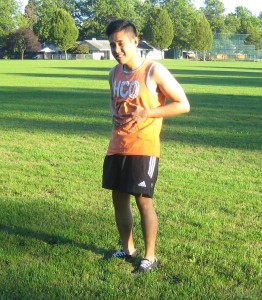Bruised ribs can occur when a hard object hits a rib or the abdominal area. This will cause the ribs to hit against the muscle wall that surrounds them and will cause bruising.
Athletes playing contact sports usually suffer from bruised ribs which can be due to a fall, a blow to side of the body and it is very painful and can cause difficulty in breathing. The ribs cannot be immobilized and the healing process takes a longer time, but with proper treatment, healing period can be hastened short and pain is reduced.
Symptoms of bruised ribs

- A bruised rib is painful because the chest cavity is used for breathing and causes the lungs to move. The pain is almost constant and there is severe pain when laughing, inhaling deeply, rolling into the affected area and when coughing.
- Bruises occur on the site of pain. If the pain is caused by a blow or injury, the bruising only manifests when the crack is caused by coughing.
- There is severe pain when moving, bending over and pressing the side.
- If the ribs are cracked and he/she has difficulty in breathing, seek medical help immediately.
Remember that it takes about two months for bruised ribs to heal. By enrolling in a course on first aid, you can readily manage the symptoms.
Treatment of bruised ribs
- Take over-the-counter pain medications.
- Apply an ice compress or ice pack to the affected area in order to minimize swelling that might occur. Wrap the ice pack with a towel and avoid applying the ice directly into the affected area. Apply in an alternating manner between 15 minutes with ice and another 15 without ice. Instruct the individual to perform slow and deep breathing in order to regulate the breathing and minimize the severity of bruising.
- The individual should protect his/her body from further injury by putting the hands in front and he/she should avoid any hugging.
- Allow the individual to rest and avoid performing sports or physical activities that can cause further injury to the ribs.
- Minimize stretching exercises for the first 24-72 hours.
- Perform some moderate exercises such as aerobics in order to stay in shape and minimize issues in breathing.
- Take supplements such as calcium and Vitamin D. It is also important to be exposed to 15 minutes of sunlight on a daily basis in order to improve bone health and stimulate the body to produce new osteocytes for the proper functioning of the bones. A brittle and weak bone only delays the healing process and increases the chance of having another bruised rib.
- Drink fruit smoothies or an energy drink after sustaining a bruised rib.
- If the individual returns to sports and experiences pain, he/she must stop immediately. As for lifting exercises, start with lighter weights and then gradually build up to full capacity.
